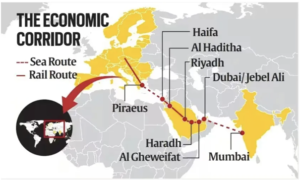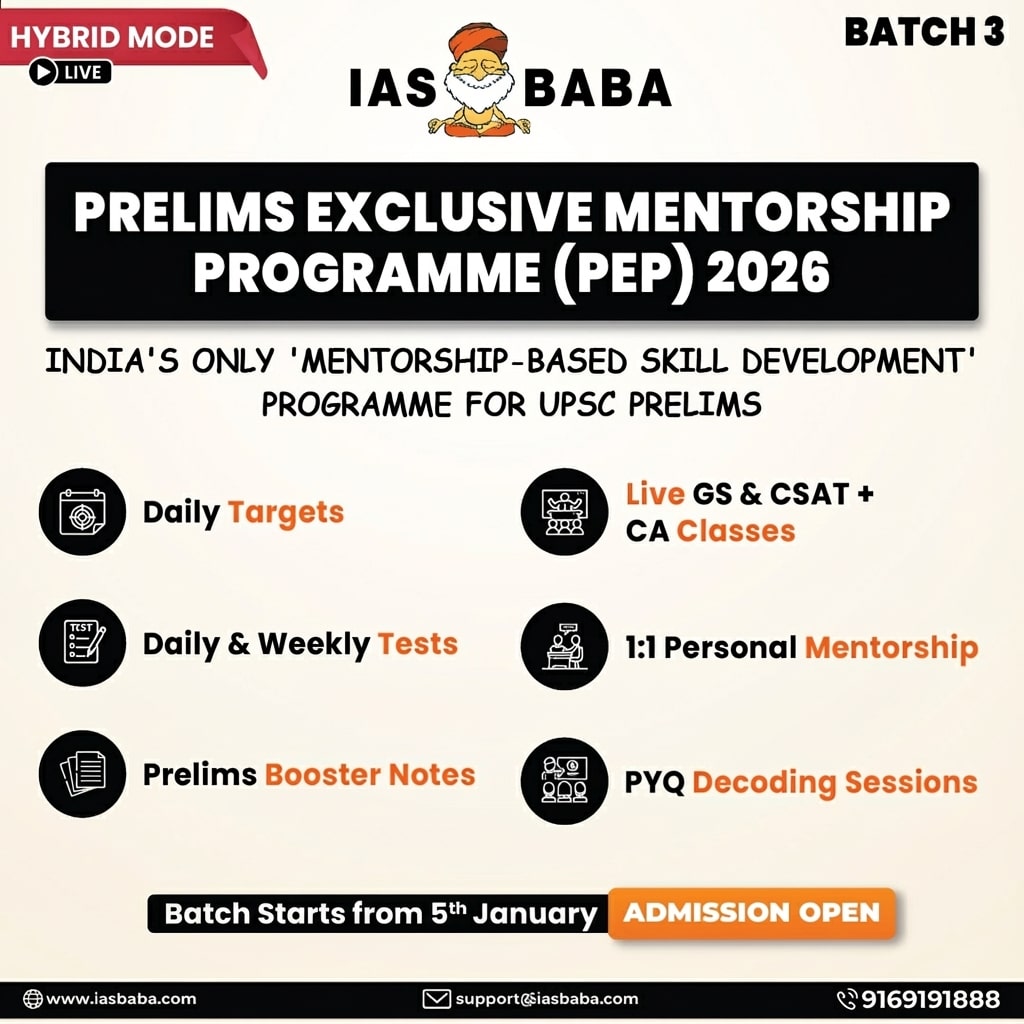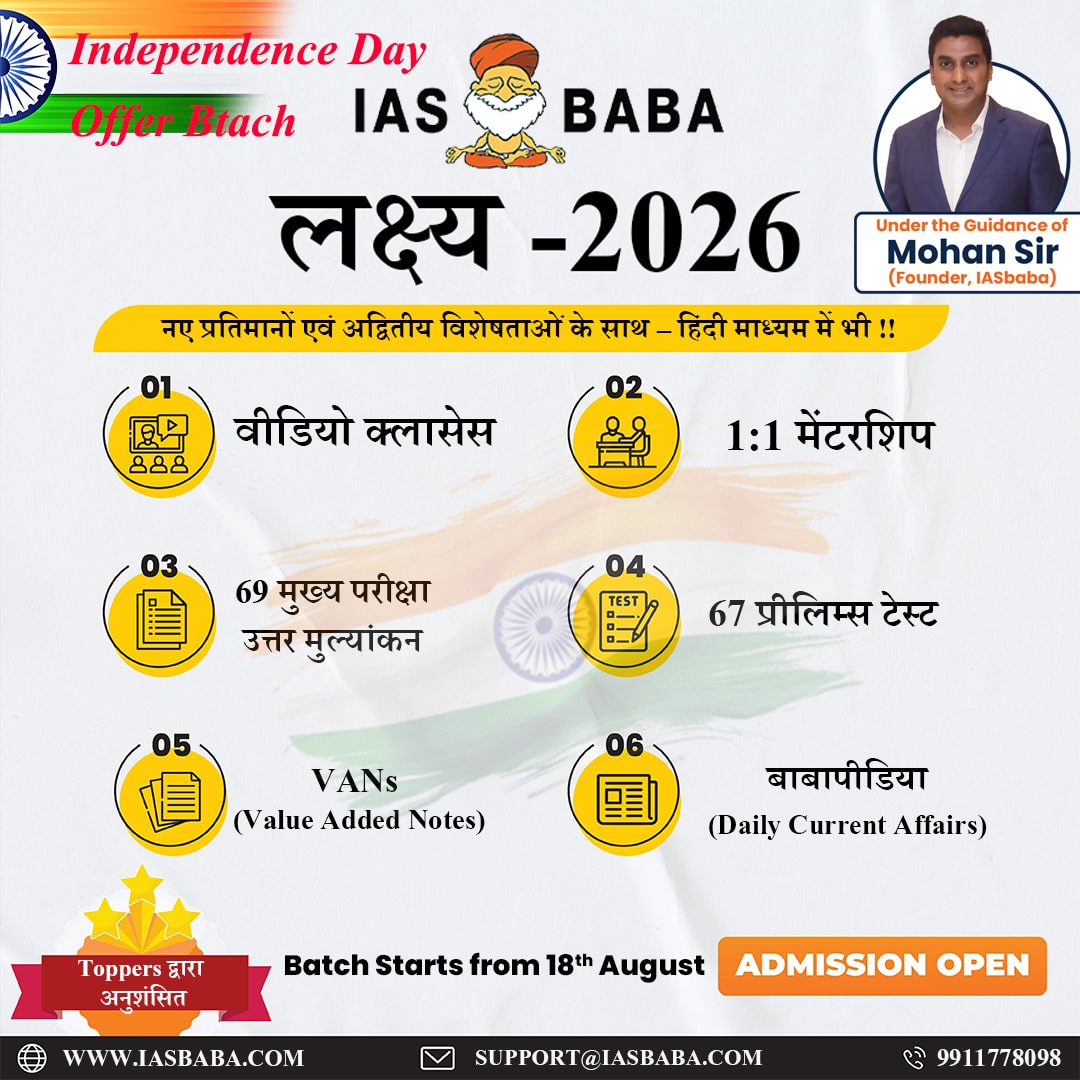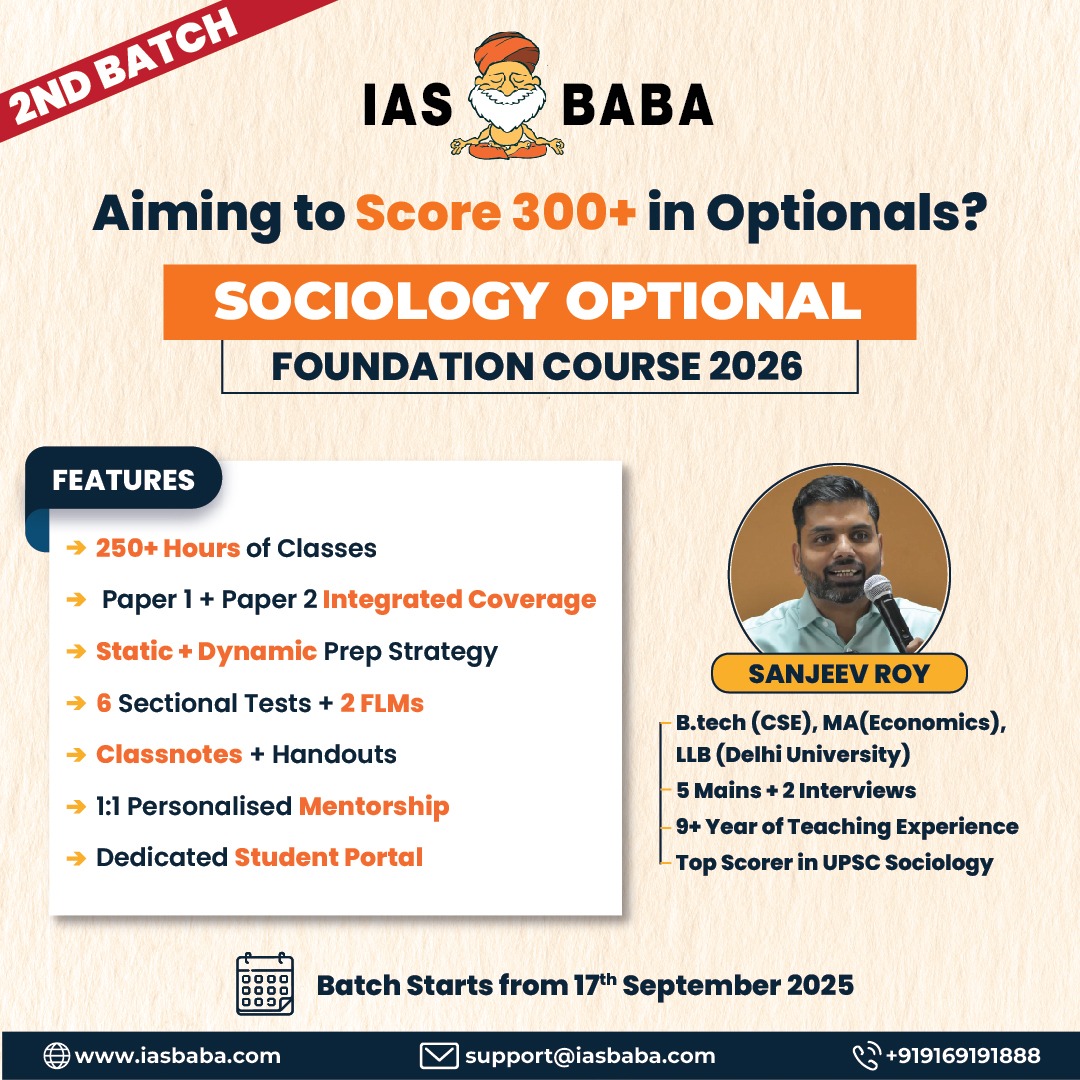IASbaba's Daily Current Affairs Analysis
Archives
(PRELIMS & MAINS Focus)
Category: NATIONAL
Context: The Assam Cabinet announced the withdrawal of around 28,000 pending cases at the state’s Foreigner Tribunals against members of the Koch Rajbongshi community.
Decoding the context: Foreigner Tribunals are quasi-judicial bodies are tasked with determining whether individuals fall within the definition of a “foreigner” under the Foreigners Act, 1946. Chief Minister Himanta Biswa Sarma said the decision was taken as the state government considered them an “indigenous community”.
Learning Corner:
- The community traces its lineage to the Koch Dynasty of the Kamata Kingdom, which rose to power in the 16th century. Today, its members are spread across Assam and West Bengal, as well as parts of Bihar, Meghalaya, Bangladesh, Nepal and Bhutan, reflecting the geographical spread of the kingdom.
- In Assam, the community has a significant presence in the western districts. In 2020, the state government created a Kamatapur Autonomous Council for the advancement of the Koch Rajbongshi community.
- While the community has OBC status in Assam, it is one of six communities that has long been demanding Scheduled Tribe status.
- Another demand that gathered steam in the 1990s, though stronger among West Bengal-based groups, has been for a separate Kamatapur state comprising parts of northern West Bengal and western Assam.
Citizenship Concerns and “D-voter” Tag:
- The transborder nature of the community has played a role in the “D-voter” (Doubtful voter) tag being attached to many Koch Rajbongshis, putting a question mark on their citizenship.
- Foreigner Tribunals are tasked with adjudicating whether “suspected foreigners” (D-voters and cases referred to them by the border police) are foreigners, that is, people who entered India after March 25, 1971, according to the 1985 Assam Accord.
- The selective withdrawal of cases against Koch Rajbongshis has raised questions regarding similar relief for other communities. In 2022, the Assam government identified five Assamese Muslim sub-groups—Goriya, Moriya, Julha, Deshi, and Syed—as “indigenous” but has not extended a similar withdrawal of cases against them.
Source : Indian Express
Category: INTERNATIONAL
Context: India and Italy recently reiterated their commitment to work jointly on the ambitious India-Middle East-Europe Economic Corridor (IMEEC or the IMEC).

Decoding the context: The project was mentioned during talks between External Affairs Minister S Jaishankar and Italian Deputy Prime Minister and Minister of Foreign Affairs, Antonio Tajani, in New Delhi.
Learning Corner:
- The IMEC is a landmark project announced during the G20 Leaders’ event in New Delhi in 2023.
- It is aimed at stimulating economic development through enhanced connectivity and economic integration between Asia, the Middle East, and Europe.
- It will have two separate corridors, the east corridor connecting India to the Arabian Gulf and the northern corridor connecting the Arabian Gulf to Europe, along with a railway route for supplementing trade exchanges between India, the UAE, Saudi Arabia, Jordan, Israel, and Europe.
- India, Saudi Arabia, the UAE, France, Germany, Italy, the European Union and the United States signed an MoU for its development, linked to the Partnership for Global Infrastructure and Investment (PGII).
- First announced in 2021 during the G7 (or Group of Seven) summit in the UK, the PGII has been billed as an alternative funding source to China’s Belt and Road Initiative (BRI).
Challenges and progress
- The October 7, 2023 Hamas attack on Israel, and the ensuing Gaza conflict, cast uncertainty over the viability of IMEEC.
- Heightened tensions in the Middle East pose risks to infrastructure continuity and cooperation.
- During Prime Minister Modi’s visit to France earlier this year, he, along with French President Emmanuel Macron, visited the port city of Marseille.
- President Macron highlighted Marseille’s strategic potential as a primary entry point into the European market, describing IMEC as a “fabulous catalyst” for “concrete projects and investment.”
Source : Indian Express
Category: ART & CULTURE
Context: Celebrated Kathak dancer Kumudini Lakhia, aged 95, passed away in Ahmedabad weeks after receiving the Padma Vibhushan, India’s second-highest civilian award.
Decoding the context: Lakhia was hailed for bringing group performances in Kathak, which was largely associated with solo renditions, to the mainstream.
Learning Corner:
- Derived from the Sanskrit word ‘Katha’ (story), Kathak evolved from the tradition of Kathakars—storytellers who narrated mythological tales, primarily from the Ramayana, Mahabharata, and Puranas, using music, dance, and mime.
- Historical Roots: Originated in North India, particularly in Uttar Pradesh, Rajasthan, and parts of Madhya Pradesh, during the Bhakti movement (8th-12th centuries CE).
Evolution:
- Mughal Influence (16th-19th centuries): Kathak transitioned from temple to royal courts (e.g., Mughal darbars, Rajput palaces), incorporating Persian elements like intricate footwork and spins, patronized by rulers like Akbar and Wajid Ali Shah (Nawab of Awadh).
- Colonial Decline: British rule marginalized Kathak, labeling it frivolous, pushing it to private settings or courtesan performances (tawaifs).
- Post-Independence Revival: Recognized as a classical dance in the 1950s, with institutions like Sangeet Natak Akademi and gurus formalizing its pedagogy.
Gharanas: Distinct schools shaping Kathak’s style:
- Lucknow: Emphasizes grace (nazakat), expression (abhinaya), and storytelling.
- Jaipur: Focuses on vigorous footwork, complex rhythms (taal), and technical precision.
- Banaras: Balances footwork and narrative, with unique chakkars (spins).
Key Features
- Structure:
- Nritta: Pure dance with intricate footwork (tatkar), spins (chakkars), and rhythmic patterns, synchronized with percussion (e.g., tabla, pakhawaj).
- Nritya: Expressive dance conveying emotions (bhava) and stories through facial expressions (abhinaya), hand gestures (mudras), and body movements.
- Music: Accompanied by Hindustani classical music (e.g., thumri, dadra, ghazal) and instruments like sitar, sarangi, and harmonium.
- Performance Elements: Signature moves include rapid spins (chakkars), precise footwork (tatkar), and dynamic pauses (tihai).
- Major Exponents: Bindadin Maharaj (Lucknow Gharana), Wajid Ali Shah, Birju Maharaj.
Source : Hindustan Times
Category: ENVIRONMENT
Context: Forest fires that erupted in several parts of Phawngpui National Park, Mizoram, have affected nearly one-ninth of the park’s total area, according to state forest officials.
Decoding the context: The fire originated from slash-and-burn (jhum) cultivation near Archhuang village on March 11, 2025, and spread into forest zones of the park.
Learning Corner:
- Establishment: Notified as a National Park in 1997, though often cited as established in 1992 for conservation planning.
- Area: Covers 50 sq. km, encompassing Phawngpui Peak, Mizoram’s highest point at 2,157 meters above sea level.
- Location: Situated in Lawngtlai District, southeastern Mizoram, under the Lai Autonomous District Council, near the India-Myanmar border.
- Named after Phawngpui Peak, derived from the Lai language: “phong” (meadow) and “pui” (great), reflecting its grassy ridges. Alternatively, means ‘Place of bamboo grass’ in Lai-Pawi dialect.
- Called Blue Mountain due to clouds veiling the peak, giving it a blue hue from afar.
- Features steep cliffs (e.g., Thlazuang Khâm, a semi-circular precipice), natural grasslands (e.g., Far Pak), and the Chhimtuipui River (Kalodyne) along its eastern boundary, marking the Myanmar border.
- Flora:
- Dominated by sub-tropical broadleaf and tropical evergreen forests, with patches of Himalayan oak, Indian pine, and bamboo groves.
- Rich in orchids, rhododendrons, daphnia flowers, therapeutic basil, and rare bamboo species (e.g., Eulalia triplicate).
- Grasslands and wildflowers enhance its scenic beauty.
- Fauna:
- Notable Mammals: Clouded leopard, Hoolock gibbon, Slow loris, Malayan sun bear.
- Birds: Blyth’s tragopan, Mrs. Hume’s pheasant (Mizoram’s state bird), Wreathed hornbill, Fire-tailed sunbird, Grey sibia, Dark-rumped swift, Mt. Victoria babax.
Source : Hindustan Times
Category: HISTORY
Context: The Prime Minister Shri Narendra Modi paid homage to the martyrs of Jallianwala Bagh.
Decoding the context: The Jallianwala Bagh massacre occurred on April 13, 1919, in Amritsar, Punjab, during the Baisakhi festival.
Learning Corner:
- Occurred during British rule, amidst growing unrest against repressive policies post-World War I (1914–1918).
- The Rowlatt Act (1919), passed by the Imperial Legislative Council, allowed indefinite detention without trial, sparking nationwide protests.
- Punjab, under Lieutenant-Governor Michael O’Dwyer, faced severe wartime restrictions, forced recruitment, and economic strain, fueling anti-British sentiment.
- Immediate Trigger: On April 10, 1919, the arrest and deportation of nationalist leaders Dr. Satyapal and Dr. Saifuddin Kitchlew in Amritsar led to protests, which turned violent after police firing killed several Indians.
- This prompted a peaceful gathering on April 13 to protest the arrests and Rowlatt Act, coinciding with Baisakhi celebrations.
Events of the Massacre
- Nearly 20,000–25,000 people (including women and children) gathered in Jallianwala Bagh, a walled garden with only one narrow exit. Most were unaware of the martial law prohibiting assemblies, as the notice was poorly publicized.
- Brigadier-General Reginald Dyer’s Actions: Dyer, the acting military commander of Amritsar, arrived with force. Without warning, Dyer ordered his troops to fire on the unarmed crowd at 5:30 PM, targeting the densest areas.
- Casualties:
- Official British estimates: 379 dead, 1,200 injured.
- Indian National Congress inquiry (1920): Over 1,000 dead, 1,500+ injured.
Consequences
- Sparked outrage across India, uniting diverse groups against British rule. Amritsar became a focal point of resistance, with protests escalating nationwide.
- Mahatma Gandhi launched the Non-Cooperation Movement (1920–1922), inspired by the massacre’s injustice, marking a shift from moderate to mass-based agitation. Rabindranath Tagore renounced his knighthood in protest.
- British Response:
- The Hunter Commission (1919–1920), set up to investigate, mildly censured Dyer, relieving him of active duty without prosecution.
- The British House of Lords praised Dyer, while the Commons condemned him; he retired to England, unpunished.
- Udham Singh’s Retribution:
- On March 13, 1940, Udham Singh, a survivor, assassinated Michael O’Dwyer (former Lieutenant Governor of Punjab Province, who had backed General Dyer ) in London, seeking justice for Jallianwala. Hanged in 1940, Udham Singh became a martyr.
- International Impact: Exposed British imperialism’s brutality, weakening its moral legitimacy globally.
Investigations and Legacy
- Hunter Commission (1919–1920):
- Formed under William Hunter, it included British and Indian members (e.g., Chimanlal Setalvad, Pandit Jagat Narayan).
- Criticized Dyer for “grave error” in firing without warning but avoided systemic blame. Indian members dissented, demanding stronger accountability.
- Congress Inquiry (1920): Led by Madan Mohan Malaviya and Motilal Nehru, it estimated higher casualties and condemned British apathy.
Source : Business Standard
Practice MCQs
Q1.
With reference to Kathak, consider the following statements:
- Kathak originated during the Bhakti movement and was traditionally performed in South Indian temples.
- Mughal patronage introduced elements like intricate footwork and pirouettes into Kathak.
- Kumudini Lakhia is credited with transforming Kathak into a group performance.
- The Jaipur Gharana is known for its emphasis on narrative expression and subtle abhinaya.
Which of the statements given above is/are correct?
A. 1 and 2 only
B. 2 and 3 only
C. 1, 2 and 3 only
D. 2, 3 and 4 only
Q2.With reference to Phawngpui National Park, consider the following statements:
- It is located in the Lawngtlai District of Mizoram and shares a border with Bangladesh.
- It is known as the Blue Mountain due to the bluish appearance of its peak from a distance.
- The park is home to endangered species like the Clouded Leopard and Hoolock Gibbon.
- The Chhimtuipui River marks part of its western boundary.
Which of the statements given above is/are correct?
A. 1 and 4 only
B. 2 and 3 only
C. 2, 3 and 4 only
D. 1, 2 and 3 only
Q3.With reference to the Jallianwala Bagh massacre of 1919, consider the following statements:
- The massacre occurred in response to violent protests led by Mahatma Gandhi.
- The Hunter Commission recommended severe legal action against General Dyer.
- Rabindranath Tagore renounced his knighthood as a protest against the massacre.
- Udham Singh assassinated General Dyer in Caxton Hall, London.
Which of the statements given above is/are correct?
A. 1 and 4 only
B. 3 only
C. 2 and 3 only
D. 3 and 4 only
Comment the answers to the above questions in the comment section below!!
ANSWERS FOR ’ Today’s – Daily Practice MCQs’ will be updated along with tomorrow’s Daily Current Affairs
ANSWERS FOR 12th April – Daily Practice MCQs
Q.1) – a
Q.2) – b
Q.3) – c














